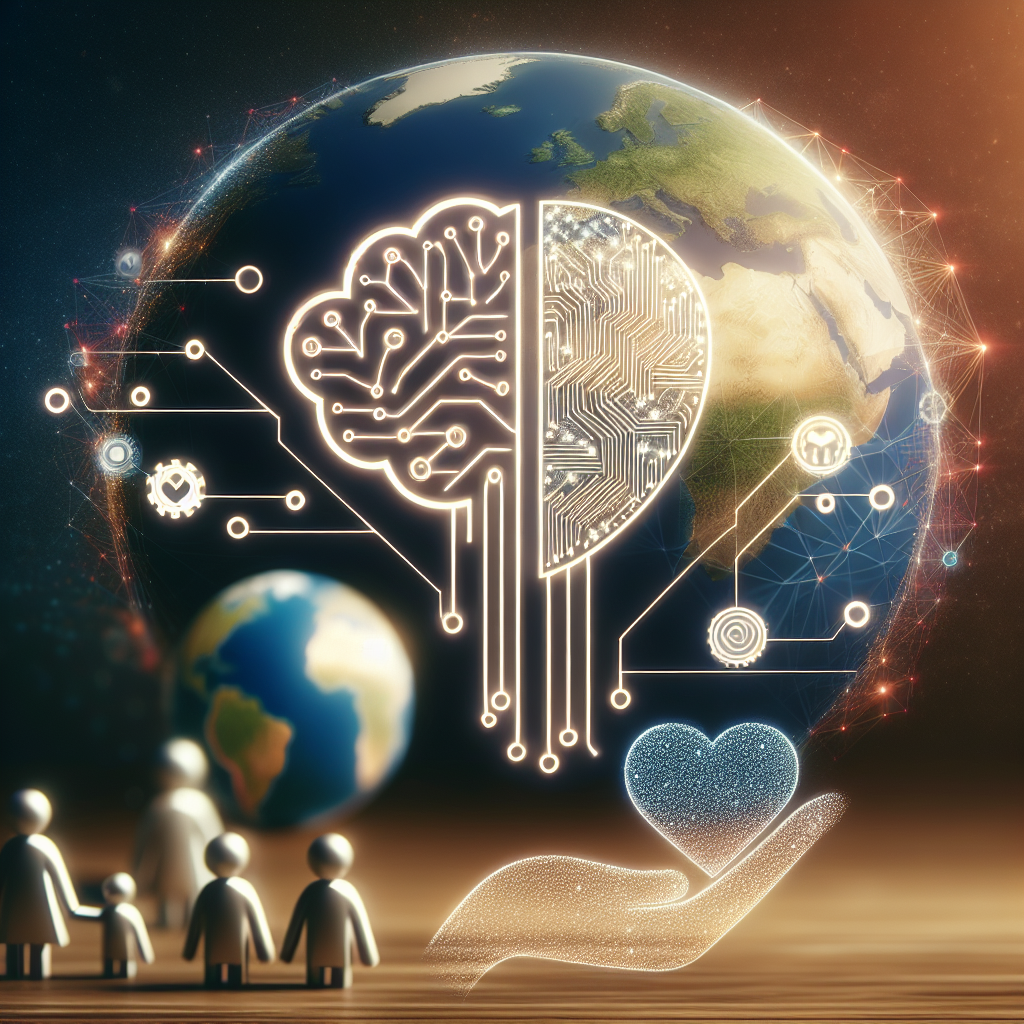In recent years, the rise of artificial intelligence (AI) has transformed various industries and sectors, including philanthropy. AI has the potential to revolutionize the way philanthropic organizations operate, making their efforts more effective, efficient, and impactful. Leveraging AI for social change has become a key focus for many philanthropic organizations, as they seek to maximize their impact and address some of the most pressing social issues of our time.
The Potential of AI in Philanthropy
AI has the potential to significantly enhance the effectiveness of philanthropic efforts in a number of ways. One of the key benefits of AI is its ability to analyze vast amounts of data quickly and efficiently. This can help philanthropic organizations better understand the needs of the communities they serve, identify trends and patterns, and make more informed decisions about where to allocate resources.
AI can also help philanthropic organizations improve their fundraising efforts. By analyzing donor data and behavior, AI can help organizations better target their fundraising campaigns, identify potential donors, and personalize their outreach efforts. This can lead to higher donation rates and increased support for philanthropic causes.
Another key benefit of AI in philanthropy is its ability to automate repetitive tasks and processes, freeing up time and resources for organizations to focus on more strategic initiatives. For example, AI-powered chatbots can handle donor inquiries and provide information about the organization’s programs and initiatives, allowing staff members to focus on more complex tasks.
AI can also help philanthropic organizations improve their impact measurement and evaluation processes. By analyzing data on the outcomes of their programs and initiatives, organizations can better understand what works and what doesn’t, and make data-driven decisions about where to invest their resources for maximum impact.
Overall, AI has the potential to revolutionize the way philanthropic organizations operate, making their efforts more efficient, effective, and impactful.
Examples of AI in Philanthropy
There are already many examples of philanthropic organizations leveraging AI to drive social change. One such example is the Gates Foundation, which has been using AI to analyze data on global health trends and identify opportunities to improve healthcare outcomes in developing countries. By analyzing data on disease prevalence, vaccine coverage, and healthcare access, the foundation has been able to target its resources more effectively and make a greater impact on global health.
Another example is the Robin Hood Foundation, which has been using AI to analyze data on poverty and inequality in New York City. By analyzing data on income levels, education outcomes, and access to healthcare, the foundation has been able to identify the root causes of poverty and develop targeted interventions to address them.
In addition to these examples, there are many other philanthropic organizations around the world that are leveraging AI to drive social change. From using AI-powered chatbots to improve donor engagement to using machine learning algorithms to predict the impact of different interventions, AI is helping philanthropic organizations make a greater impact on the communities they serve.
Challenges and Considerations
While the potential of AI in philanthropy is vast, there are also challenges and considerations that organizations need to keep in mind when implementing AI-powered initiatives. One of the key challenges is the ethical implications of using AI in philanthropy. For example, there are concerns about data privacy and security, algorithmic bias, and the potential for AI to exacerbate existing inequalities.
Another challenge is the need for organizations to have the necessary expertise and resources to implement AI-powered initiatives effectively. This includes having access to data scientists, AI experts, and technology infrastructure to support AI projects.
Organizations also need to consider the potential risks and limitations of AI in philanthropy. For example, AI is not a panacea and cannot replace the human touch and empathy that are key to effective philanthropic work. Organizations need to strike a balance between using AI to enhance their efforts and maintaining a human-centered approach to their work.
Overall, organizations need to carefully consider the ethical, technical, and practical implications of leveraging AI for social change, and ensure that they have the necessary expertise and resources to implement AI-powered initiatives effectively.
FAQs
Q: How can AI help philanthropic organizations improve their fundraising efforts?
A: AI can help organizations better target their fundraising campaigns, identify potential donors, and personalize their outreach efforts. By analyzing donor data and behavior, AI can help organizations increase donation rates and support for philanthropic causes.
Q: What are some examples of philanthropic organizations using AI to drive social change?
A: The Gates Foundation has been using AI to analyze data on global health trends and improve healthcare outcomes in developing countries. The Robin Hood Foundation has been using AI to analyze data on poverty and inequality in New York City and develop targeted interventions to address them.
Q: What are some of the challenges of using AI in philanthropy?
A: Some of the challenges of using AI in philanthropy include ethical concerns about data privacy and algorithmic bias, the need for expertise and resources to implement AI projects effectively, and the potential risks and limitations of AI in philanthropic work.
Q: How can organizations ensure that they are using AI in a responsible and ethical manner?
A: Organizations can ensure that they are using AI in a responsible and ethical manner by being transparent about their use of AI, ensuring that they have the necessary expertise and resources to implement AI projects effectively, and considering the potential risks and limitations of AI in philanthropic work.

